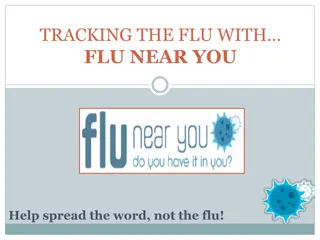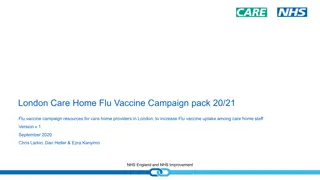Understanding Common Cold: Symptoms, Differentiation from Flu, and Treatment
The common cold is a viral upper respiratory infection that is self-limiting. It presents with symptoms like runny or blocked nose, coughing, sore throat, and fever. Knowing how to differentiate it from the flu, managing asthma exacerbations, when to refer to a healthcare provider, and effective treatment options can help in dealing with this common ailment. Prevention through vaccinations and antiviral drugs can also be beneficial.
Download Presentation

Please find below an Image/Link to download the presentation.
The content on the website is provided AS IS for your information and personal use only. It may not be sold, licensed, or shared on other websites without obtaining consent from the author. Download presentation by click this link. If you encounter any issues during the download, it is possible that the publisher has removed the file from their server.
E N D
Presentation Transcript
Common Cold Common Cold The common cold comprises a mixture of viral upper respiratory tract infections. It is self-limiting. over-the-counter (OTC) medicines for symptomatic relief.
Questions to be asked Questions to be asked Age Duration Symptoms Previous history Present medication Age Duration Symptoms Previous history Present medication
Symptoms Symptoms Runny/blocked nose Summer colds Sneezing/coughing Aches and pains High temperature Sore Earache Facial pain/frontal headache Runny/blocked nose Summer colds Sneezing/coughing Aches and pains/ / headach High temperature Sore throat Earache Facial pain/frontal headache headach throat
Differentiating between colds and flu Flu often starts abruptly Fever..temperature is 38 C or higher. one or more respiratory symptom cough, sore throat, nasal congestion or rhinorrhoea is present; or One or more constitutional symptom headache, malaise, myalgia, sweats/chills, prostration is present.
Asthma Asthmatic attacks can be triggered by respiratory viral infections. Most asthma sufferers learn to start or increase prevent such an occurrence. their usual medication to
When to refer When to refer Earache not settling with analgesic In the very young In the very old In those with heart or lung disease, e.g. COPD, kidney disease, diabetes, compromised immune system With persisting fever and productive cough With delirium With pleuritic-type chest pain Asthma
Treatment timescale (in 10 14 days) Treatment timescale Decongestants, Antihistamines Zinc Vitamin C Cough remedies Analgesics Products for sore throats Decongestants, Sympathomimetics Antihistamines Zinc Vitamin C Cough remedies Analgesics Products for sore throats Sympathomimetics
Prevention of flu Prevention of flu Vaccinations. Antiviral drugs: may help reduce the duration of flu symptoms, Three antiviral products are licensed for use: oseltamivir, zanamivir And amantadine. Antibiotics:
Cough Coughing is a protective reflex action Caused when the airway is being irritated or obstructed. Its purpose is to clear the airway so that breathing can continue normally. Often be associated with other symptoms of a cold.
Questions to be Asked Age Duration Nature of cough . Associated symptoms Present medication (ACEI)
Nature of cough Unproductive (dry, tickly or tight) Productive (chesty or loose) Tuberculosis (TB) Croup (acute laryngotracheitis) Whooping cough (pertussis)
Previous History Chronic bronchitis Asthma Cardiovascular Gastro-oesophageal Smoking habit
When to refer When to refer Cough lasting 2 weeks or more and not improving Sputum (yellow, green, rusty or blood-stained) Chest pain Shortness of breath Wheezing Whooping cough or croup Recurrent nocturnal cough Suspected adverse drug reaction Failed medication
Treatment timescale Treatment timescale Cough suppressants Expectorants Antihistamines Sympathomimetics Theophylline Cough suppressants Expectorants Antihistamines Sympathomimetics Theophylline






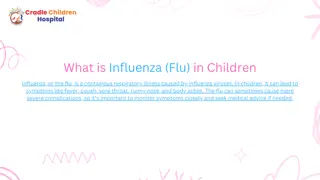
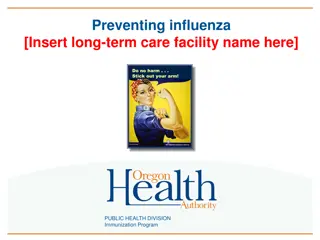



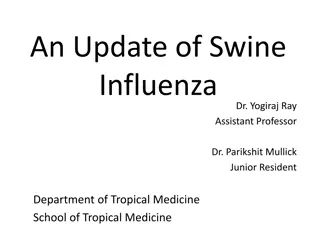
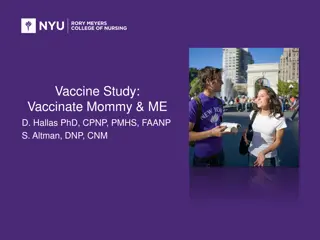
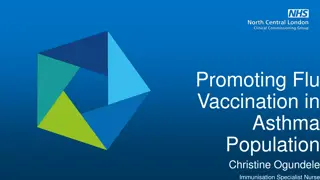

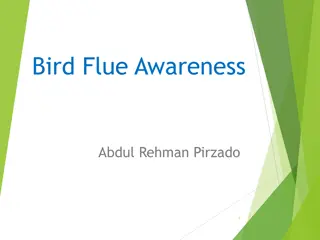
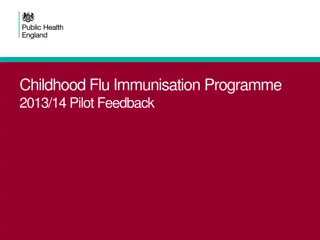

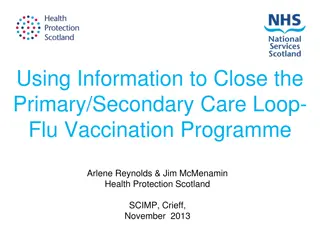
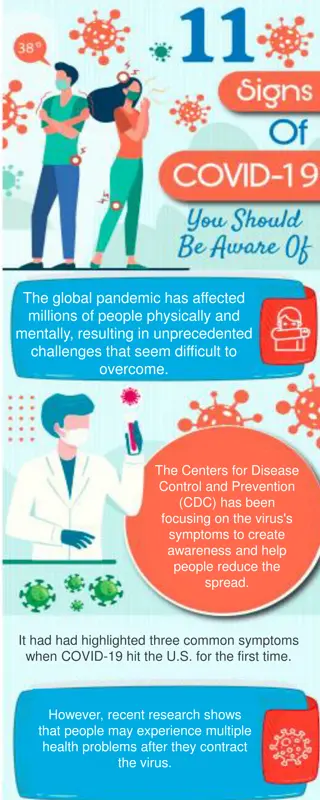

![Preventing Influenza at [Name of Critical Access Hospital]](/thumb/233818/preventing-influenza-at-name-of-critical-access-hospital.jpg)
